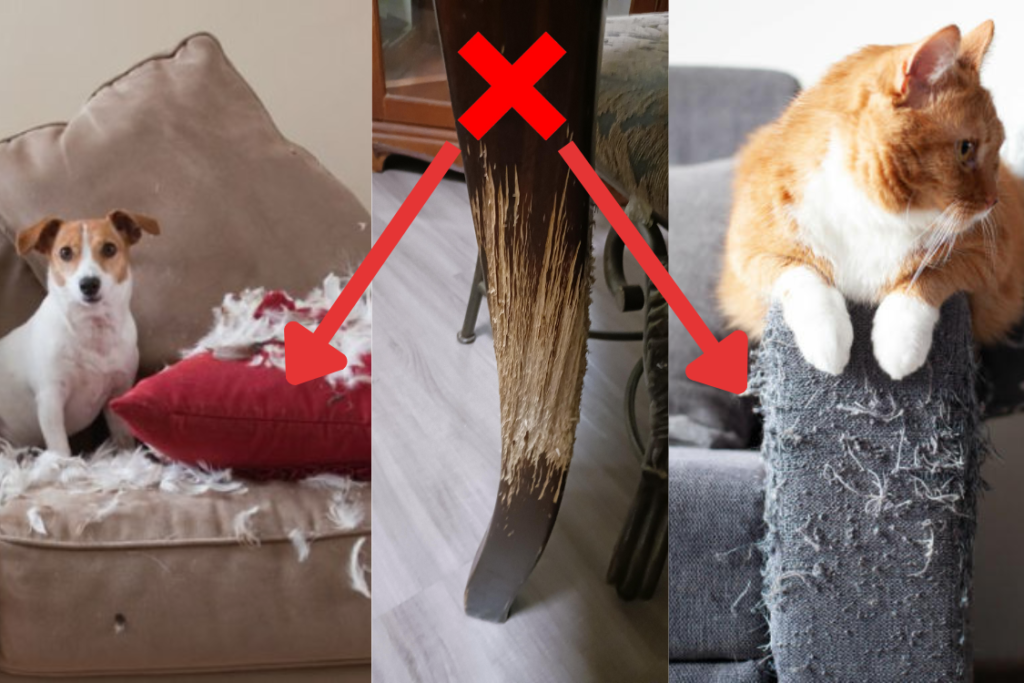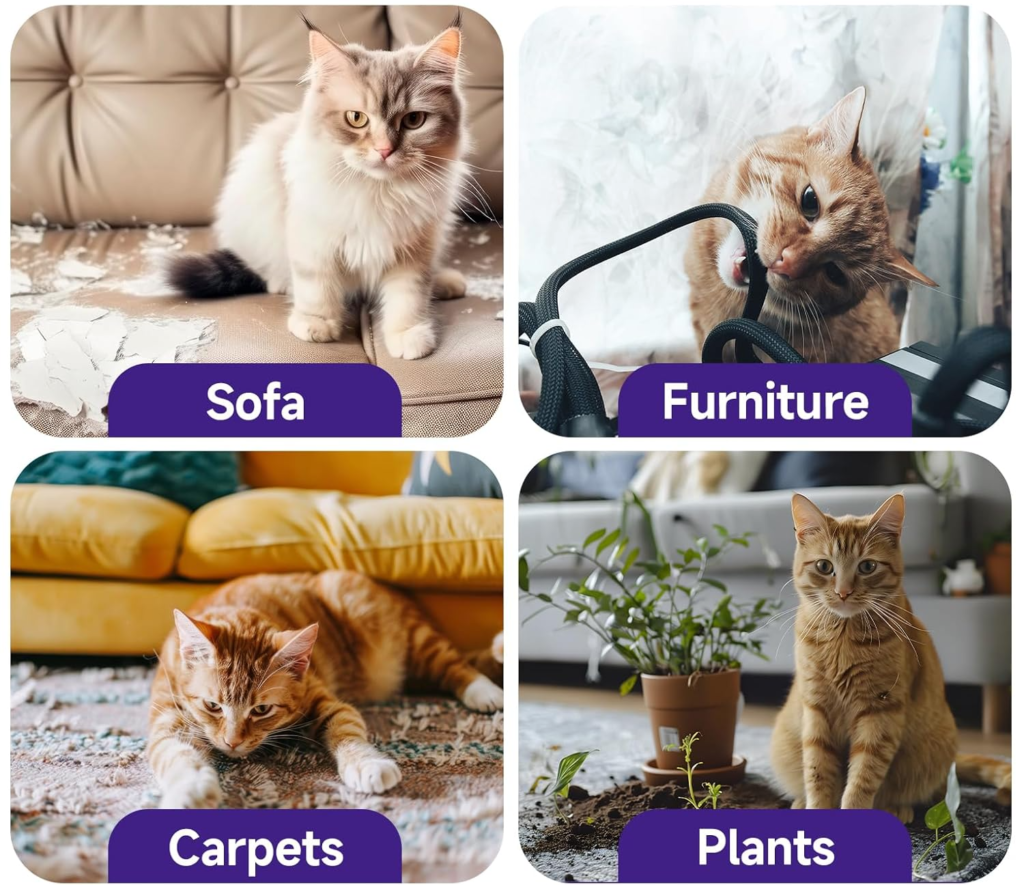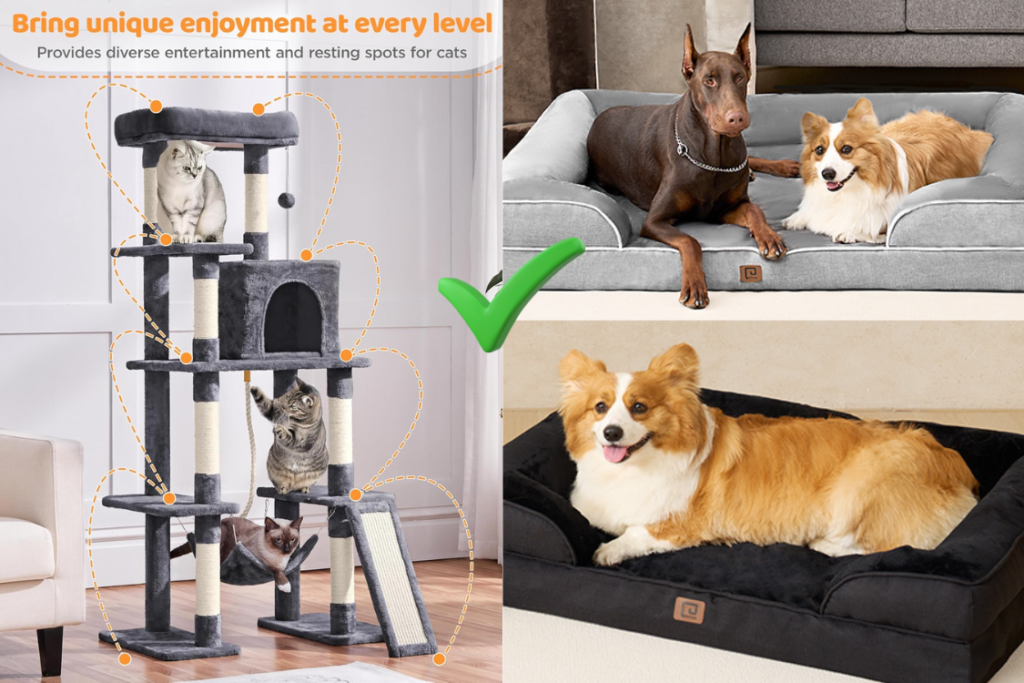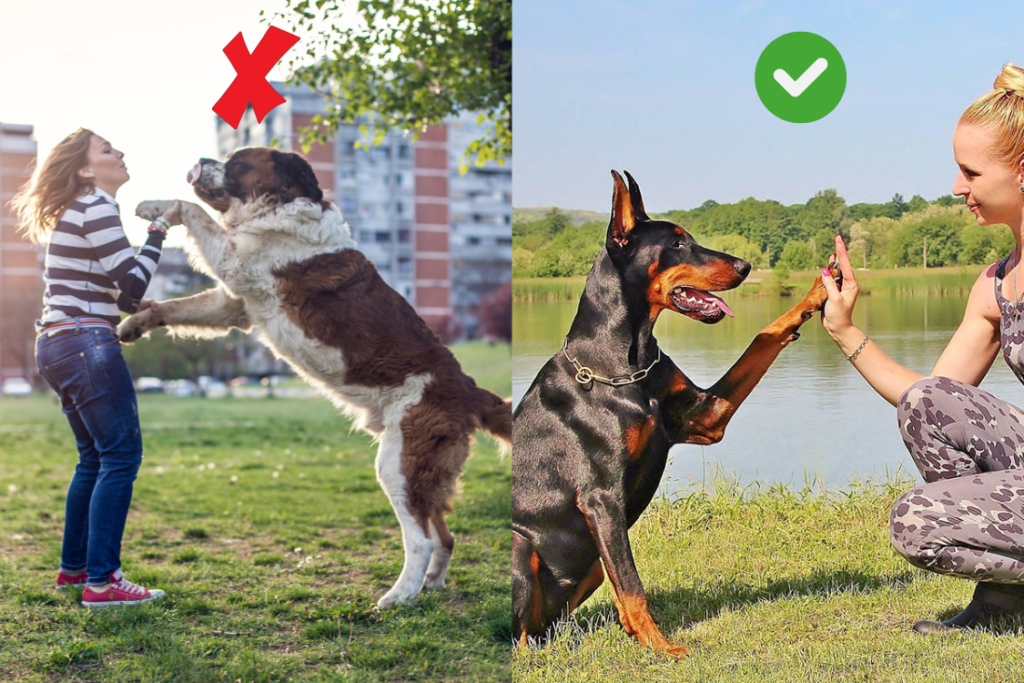
You love your pets, but that doesn’t mean you want their fur all over your couch, claw marks on your chairs, chewed-up table legs and destroyed pillows…
Whether it’s a dog who loves to nap on your favorite recliner or a cat that sees your couch as the perfect scratching post, keeping pets off the furniture can feel like an endless battle.
Luckily, with the right strategies, training, and deterrents, you can create clear boundaries without making your pet feel unwanted.
1. Establish Clear Boundaries Early On

The best way to keep pets off furniture? Never let them get on in the first place! If you’re bringing home a new puppy, kitten, or rescue pet, setting clear rules from day one will save you a lot of trouble later.
How to Set Boundaries:
- Be consistent – If you allow your pet on the furniture “just this once,” they’ll assume it’s always okay.
- Use verbal cues – Commands like “off” or “down” (for dogs) and gentle redirection (for cats) can reinforce boundaries.
What If My Pet Is Already Used to the Furniture?
If your pet has been lounging on the couch for years, don’t worry—it’s not too late to change the habit. Just be patient and use a combination of deterrents and positive reinforcement to shift their behavior.
2. Make the Furniture Less Appealing

If your pet doesn’t find the furniture comfortable or enjoyable, they’ll naturally lose interest. There are several safe and pet-friendly ways to make your furniture less inviting.
Tactics to Try:
- Use pet-safe deterrent sprays – These sprays have scents (like citrus or bitter apple) that pets dislike, making furniture less appealing to them. A great option is the Anti-Scratch Cat Deterrent Spray.
- Cover furniture with aluminum foil or plastic mats – Many pets dislike the texture and will avoid stepping on them.
- Place double-sided tape on problem areas – This works especially well for cats, who hate sticky surfaces.
- Remove tempting blankets or pillows – Soft, cozy materials encourage lounging, so keep them out of reach.
Pro Tip:
Rotate deterrents if your pet gets used to one. For example, if your cat stops reacting to tape, try a different surface or scent.
3. Give Your Pet a Better Place to Rest

If you want your pet to stay off the furniture, they need a better option! A cozy, dedicated space just for them can make all the difference.
For Dogs:
- Invest in a cozy, supportive option like the Waterproof Orthopedic Dog Bed to keep your pet off the furniture.
- Place it in a familiar, quiet location where they feel safe.
- Reward your dog every time they choose their bed over the furniture with Greenies Pill Pockets Dog Treats.
For Cats:
- Provide a cat tree or window perch—cats love being elevated, and this gives them a better spot to climb. The Multi-Level Cat Tree (63 Inches Tall) offers the perfect elevated spot to keep them off your furniture.
- Offer a heated pet bed—many cats seek warmth, which is why they love sleeping on couches and chairs.
- Use catnip or treats to encourage them to use their designated spot.
Why It Works:
Your pet isn’t just looking for comfort—they want a space that feels safe and rewarding. Make their own space even better than the furniture!
4. Train with Positive Reinforcement

Scolding your pet for jumping on the couch might not work as well as you’d hope. Instead, reward good behavior to encourage lasting habits.
How to Use Positive Reinforcement:
- Catch them in the act – The moment your pet stays on their bed instead of the couch, reward them with praise or treats.
- Redirect calmly – If they jump on the furniture, guide them to their own spot instead of punishing them.
- Use commands – Train dogs with phrases like “off” or “bed,” rewarding them when they obey.
Avoid These Mistakes:
- Don’t punish after the fact – Your pet won’t understand why they’re being scolded if you do it too late.
- Be patient – Changing habits takes time. Stay consistent with training to see results.
Pro Tip:
For dogs, try using a clicker training method—this helps reinforce commands quickly and effectively.
5. Block Access to Problem Areas

If your pet is especially stubborn, sometimes the easiest solution is physically preventing access to furniture.
Simple Ways to Block Access:
- Use baby/dog gates – Great for keeping dogs out of certain rooms or off couches.
- Close doors – If possible, keep furniture-filled rooms off-limits when you’re not around.
- Place objects on the couch – A laundry basket, upside-down chair, or large pillow can act as a temporary barrier.

For Cats:
Since cats can jump and climb, blocking them requires different tactics:
- Use motion-activated deterrents – These emit a harmless burst of air or sound when a cat jumps on furniture.
- Try furniture covers with textures they dislike – Textured mats or rugs can discourage lounging.
Why It Works:
If your pet can’t access the furniture, they won’t be able to form a habit of using it. Over time, they’ll lose interest.
It doesn’t happen overnight

But with patience, consistency, and positive reinforcement, you can teach them to stay off without stress.
By staying committed to these strategies, you’ll enjoy fur-free furniture and a well-trained pet—without needing to constantly shoo them away. Your couch (and your sanity) will thank you!
If you find that your dog’s behavior isn’t improving despite your best efforts, it may be time to seek additional guidance. You can look for a local dog trainer who specializes in behavior issues, or explore online options like Doggy Dan’s Online Dog Trainer. With over a decade of experience, Doggy Dan’s program provides step-by-step lessons that can help address reactivity and other behavior issues.
Whether you choose in-person or online support, staying consistent and dedicated to your dog’s training will lead to a happier, safer companion.


